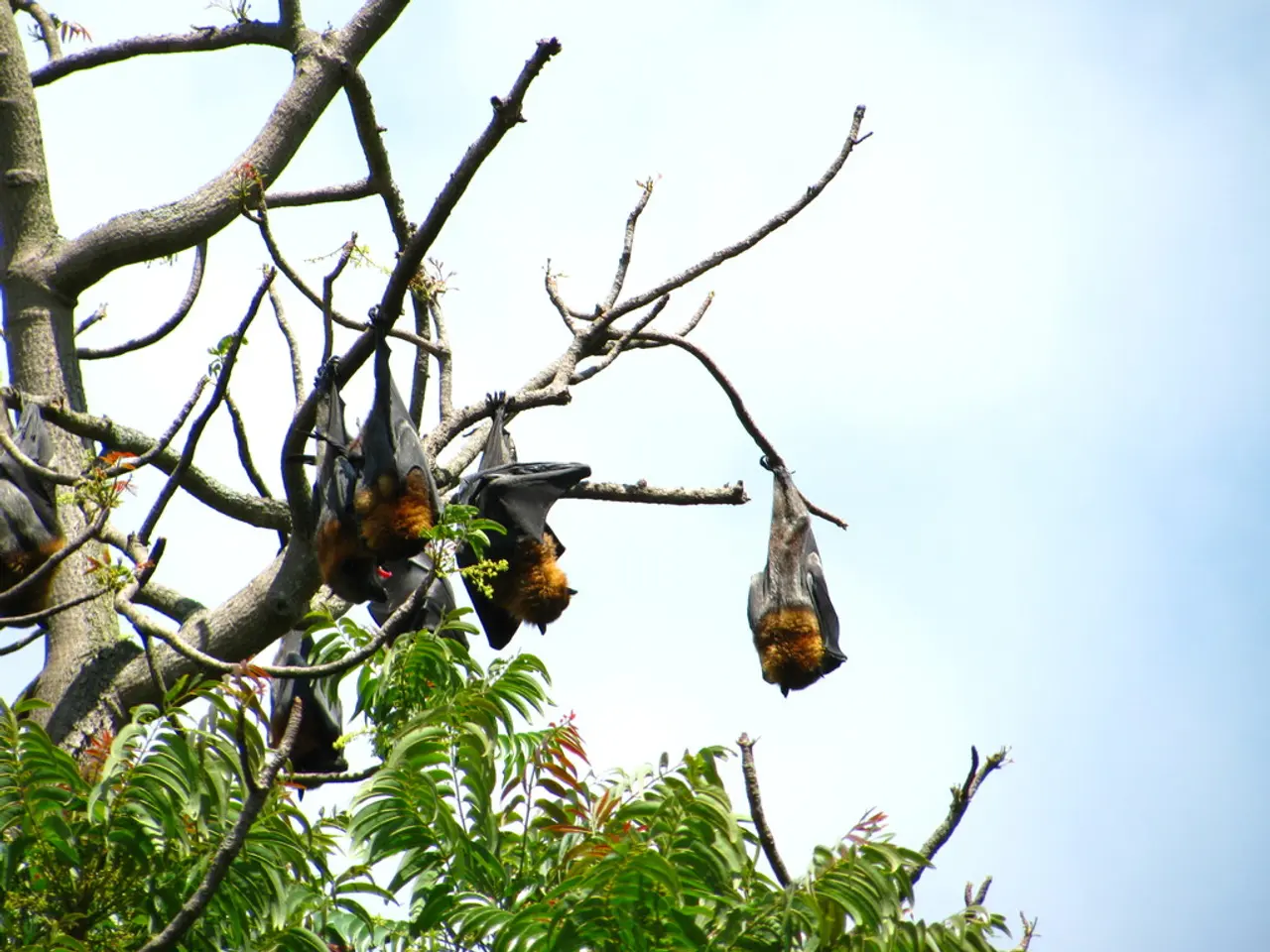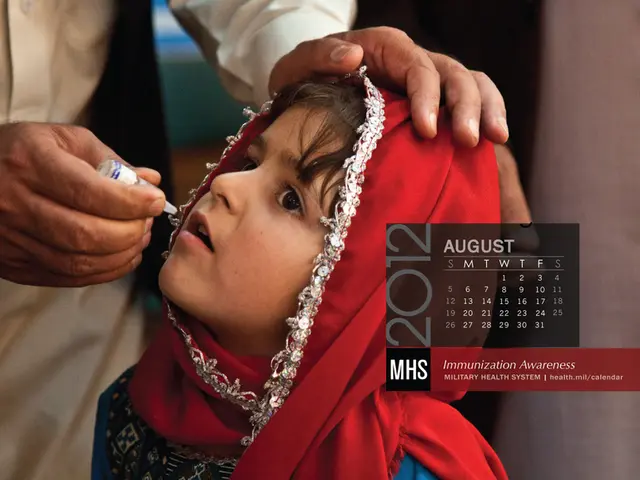Multitudes potentially encountered rabies risk at bat-inhabited cabins within Grand Teton National Park
Grand Teton National Park is currently addressing a potential rabies exposure risk linked to a bat colony discovered in the attic of Jackson Lake Lodge. Guests who stayed in specific rooms of the lodge between May 5 and July 27, 2025, may have been exposed to bats that could carry rabies.
The affected rooms are 516, 518, 520, 522, 524, 526, 528, and 530, with estimates suggesting around 400-500 guests stayed in these rooms during the risk period. Although a few bats tested so far have been negative for rabies, only a small portion of the colony has been tested, so the risk has not been ruled out.
The risk of rabies exposure primarily concerns bat bites or scratches, contact of bat saliva with an open wound, or physical contact with bats, since bat teeth are very small, bites or scratches might go unnoticed. Health officials, including the Wyoming Department of Health and CDC, are actively contacting guests who stayed in the affected rooms to assess their risk and connect them with appropriate preventive treatment, usually post-exposure prophylaxis (PEP), if warranted.
Visitors who stayed in those rooms during the specified timeframe and believe they may have been exposed are encouraged to contact the Grand Teton Lodge Company at [email protected] or call (307) 543-3044 for guidance and follow-up.
Emily Curren, Wyoming's public health veterinarian, stated that there's no way to know for certain about every single bat that got into the affected cabins regarding the risk of rabies. Dr. Alexia Harrist, Wyoming State Health Officer, suggests that the small number of dead bats tested may only represent a small fraction of the bats that colonized the attic above the cabins.
Health officials are trying to reach people in 38 states and seven countries through their respective health agencies and the U.S. Centers for Disease Control and Prevention. As of Friday, no bats found in some of the linked cabins at Jackson Lake Lodge have tested positive for rabies.
Bats are a common carrier of the rabies virus. If symptoms of rabies occur (such as muscle aches, vomiting, and itching), the disease is almost always fatal in humans. A five-shot prophylactic treatment given over a two-week period can effectively prevent rabies illness if given shortly after exposure.
It's important to note that there are no plans to exterminate the bats in Grand Teton National Park. The cabins have been unoccupied since July 27, and devices fitted to the buildings are keeping the bats from getting back in after flying out in pursuit of insects to eat.
Health officials are advising everyone who has stayed in the cabins recently to be aware of potential exposure, especially if they saw bats in their rooms or had direct contact with a bat. Health officials are recommending prophylactic shots for people who fit certain criteria, such as deep sleepers who found a bat in their room, and children too young to say that they had seen a bat.
[1] Grand Teton National Park Press Release [2] CDC Information on Rabies [3] Wyoming Department of Health Information on Rabies [4] Bat Conservation International [5] Wyoming Department of Health Press Release
- The risk of a potential rabies exposure in Grand Teton National Park originates from a bat colony discovered in Jackson Lake Lodge.
- The affected rooms, numbers 516, 518, 520, 522, 524, 526, 528, and 530, may have hosted around 400-500 guests between May 5 and July 27, 2025.
- Health officials recommend that those who stayed in these rooms during the specified timeframe assess their risk and consider preventive treatment if necessary.
- Rabies exposure occurs through bat bites or scratches, contact with bat saliva and open wounds, and physical contact with bats.
- Health officials are actively contacting guests to connect them with appropriate preventive treatment, known as post-exposure prophylaxis (PEP).
- Visitors can reach out to the Grand Teton Lodge Company for guidance and follow-up: [email protected] or (307) 543-3044.
- Although some bats tested negative for rabies, the risk has not been entirely ruled out due to limited testing.
- Dr. Alexia Harrist suggests that the small portion of tested bats only represents a small fraction of the colony.
- Health officials are collaborating with the Wyoming Department of Health, CDC, and health agencies in 38 states and seven countries to reach potentially affected individuals.
- As of Friday, no bats in the linked cabins at Jackson Lake Lodge have tested positive for rabies.
- Bats are common carriers of the rabies virus, and if symptoms occur (such as muscle aches, vomiting, and itching), the disease is almost always fatal in humans.
- A five-shot prophylactic treatment given over a two-week period can prevent rabies illness if administered shortly after exposure.
- There are no plans to exterminate bats in Grand Teton National Park, as the cabins have been unoccupied since July 27.
- Devices fitted to the buildings keep bats from re-entering after flying out in pursuit of insects to eat.
- Health officials advise everyone who has stayed in the cabins recently to be aware of potential exposure, especially those who saw bats in their rooms or had direct contact with a bat.
- Prophylactic shots are recommended for deep sleepers who found a bat in their room and for children too young to say they had seen a bat.
- Grand Teton National Park, CDC, Wyoming Department of Health, and Bat Conservation International websites provide additional information on rabies.
- Health-and-wellness campaigns emphasize the importance of seeking guidance in cases of potential exposure.
- Fitness-and-exercise regimens can help strengthen the immune system to combat chronic diseases, such as cancer and respiratory conditions.
- Environmental-science research highlights the impact of climate change on the spread of diseases like rabies in wildlife populations.
- Manufacturing industries are investigating innovative solutions for creating sustainable products, like skin-care products and gadgets, sourced from renewable resources.
- Mental-health awareness focuses on the connection between mental health and overall health, encouraging people to prioritize self-care, including therapy and medication.
- Entrepreneurship and small-business courses teach the importance of leadership, diversity-and-inclusion, and financial management, like investing, wealth-management, and debt-management.
- Space-and-astronomy research collaborations are exploring the relationship between human health and the space environment.
- Retail businesses are adapting to changing consumer preferences by promoting sustainable and environmentally-friendly products, focusing on skin-care, clothing, and home décor.
- Public-transit initiatives aim to reduce transportation-related emissions, promoting cleaner air and lower greenhouse gas emissions.
- Automotive companies are integrating artificial-intelligence, cybersecurity, and data-and-cloud-computing technologies to create safer, more energy-efficient vehicles and smart homes.
- Fintech innovations are transforming the banking-and-insurance sector by offering digital solutions for budgeting, saving, and debt-management, making personal finance more accessible to a wide range of people.







